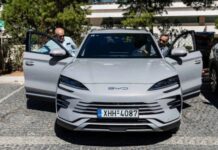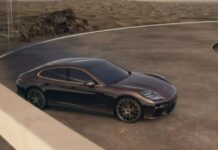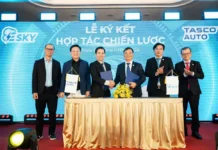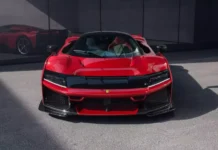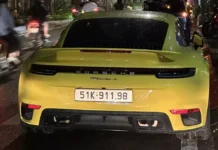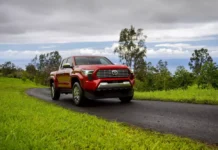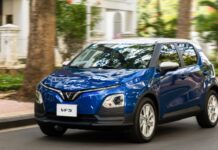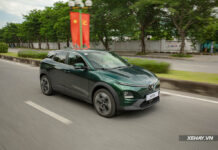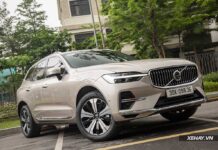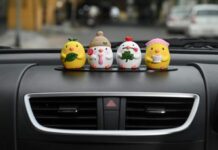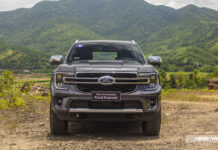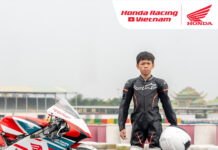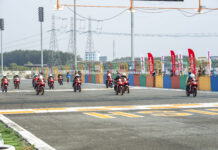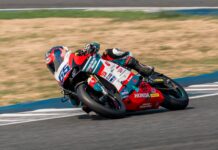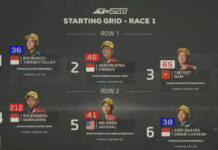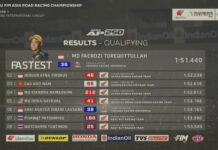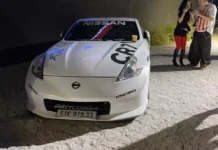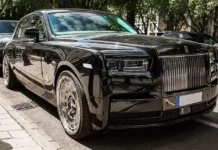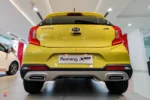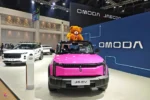
|
Over the past two years, a slew of Chinese automotive brands have entered the Vietnamese market. Unlike before, giants from the populous country such as Geely, Chery, BYD, and SAIC are approaching the market with a more refined, serious, and competitive mindset.
However, these efforts may not be enough to immediately attract Vietnamese customers.
Too Much Strong Competition
The most evident example is in the B-segment SUV category, which, within less than a year, has seen the entry of numerous models such as the Omoda C5, Geely Coolray, Lynk & Co 06, and Haval Jolion.
Despite being considered strategic weapons in their renewed assault on the Vietnamese market, these models still struggle to compete with the likes of the Toyota Yaris Cross and Mitsubishi Xforce. If we were to make a comparison, these Chinese models can only be measured against each other and stand little chance against the best-selling models from Japan or Korea.
|
|
|
Omoda C5. Photo by Vĩnh Phúc. |
In the crossover segment with a price range of around VND 1 billion, BYD Atto 3 and Jaecoo J7, as well as BYD Sealion 6, were expected to make a splash. However, in reality, this segment remains dominated by the Hyundai Tucson, Ford Territory, and Mazda CX-5. Even when it comes to expecting a novel propulsion system, Vietnamese consumers still opt for the Toyota Corolla Cross hybrid or HR-V HEV.
MG G50 and BYD M6 are introduced to the MPV segment, targeting service-oriented customers. Nevertheless, this segment remains the stronghold of the Mitsubishi Xpander and Toyota Veloz Cross. Despite their competitive pricing, the MG G50 and BYD M6 will find it challenging to compete against these established models. With the introduction of the VinFast Limo Green, the future of these Chinese MPVs looks even more uncertain.
|
|
|
GAC M6 Pro. Photo by Phúc Hậu. |
In the sub-VND 1 billion sedan segment, which has seen a decline in popularity recently, the BYD Seal and GAC Aion ES were expected to make inroads. However, the Toyota Camry remains steadfast in its position. Even if the “king” of the D-segment sedan were to falter, the two newcomers from China would still face an uphill battle against the Mazda6, Kia K3, and K5.
It can be said that despite their efforts to change perceptions, Chinese models still have a long way to go before they can make a significant impact in their respective segments, let alone break into the top 10 in sales across the market.
The strategy of offering affordable Chinese cars has made a comeback, but the timing seems less than ideal. Japanese and Korean cars are now more competitively priced than before. Toyota, Mitsubishi, and Suzuki have introduced budget-friendly models for the region, while the Mazda CX-5 continues to lower the price floor of the C-segment SUV category month after month.
Chinese cars that once created a buzz in Vietnam, such as the Zotye Z8, would struggle to compete head-on with the current Korean and Japanese offerings.
Even when priced competitively, Chinese cars are only appealing in certain segments where customers prioritize value for money or when the price is significantly lower than the competition in the same segment. In the VND 1 billion range, Chinese cars have never been an easy sell.
A Wave of Silent Exits?
Faced with intense competition from Japanese, Korean, and domestic brands, the survival of these large Chinese automakers is yet to be determined. Meanwhile, some Chinese brands that entered the market without a serious commitment are choosing to quietly exit, which is understandable.
Aion, an electric vehicle brand distributed by Harmony Vietnam, initially aimed to have 30 dealerships by this year and expand to 50 outlets by 2026. However, just a year later, their sole dealership in Ho Chi Minh City has been replaced by a BYD dealership, indicating that their disappearance from the Vietnamese market may be imminent.
TMT Motors, the distributor of Wuling electric vehicles, including the miniEV and Bingo, once had ambitious plans to replace motorcycles in Vietnam. However, they concluded 2024 with a record loss of VND 315.44 billion.
|
|
|
The now-closed Wuling dealership in Thu Duc. Photo by FB/Hùng. |
In early April, the largest Wuling dealership in southern Vietnam, located in Thu Duc, unexpectedly closed its doors. Meanwhile, the Wuling dealership in Buon Ma Thuot has transitioned to selling VinFast electric vehicles.
GAC, a gasoline-powered car brand also under the GAC group and distributed by Tanchong, has future product plans but seems to be slowing down on dealership expansion. Currently, they have around nine dealerships, falling short of the distributor’s initial goal of 20-30 outlets.
Dongfeng passenger cars, introduced to Vietnam through Carvivu at the end of 2024, lacked a proper launch and had an almost non-existent business strategy, resulting in their near disappearance from the Vietnamese automotive market.
The silent departure of Aion and the closure of dealerships by several Chinese brands can erode consumer confidence. This is because Chinese automakers have a history of entering the market en masse and then disappearing just as quickly, creating a domino effect.
|
|
|
The former GAC Aion dealership has been replaced by a BYD dealership. Photo by Phúc Hậu. |
This not only results in financial losses for local businesses but also damages the reputation of Chinese brands that are still operating with apparent seriousness. When their compatriots continuously exit the market, the remaining big players also suffer some reputational damage.
In conclusion, the Vietnamese market remains a challenging terrain for Chinese automotive brands. With the increasing diversity of domestic cars and the decreasing prices of Korean and Japanese offerings, it is difficult for Chinese SUVs and sedans, laden with technology but lacking stability, to gain the trust of Vietnamese consumers.
Suggested Reading for Your Journey
Our Automotive section brings you a selection of captivating books with diverse themes. During your travels, there are moments of rest and relaxation, and books can be delightful companions on such occasions.
The Great Automotive Leap: Chinese Auto Brands’ Endeavors for Long-term Stability in Vietnam
To bolster confidence among Vietnamese customers, automotive brands have been expediting their expansion efforts. This includes establishing an extensive network of dealerships, introducing enhanced after-sales programs, and even setting up local manufacturing plants to reinforce their commitment to the market and earn the trust of local consumers.
VinFast Teases New Electric Small Delivery Vehicle Ahead of Its Official Unveiling Tomorrow
The arrival of the new truck model will enrich the VinFast-branded product portfolio in the Vietnamese market. This addition to the VinFast lineup is a testament to their commitment to offering diverse and innovative solutions to meet the varying needs of their customers. With this expansion, VinFast reinforces its position as a leading automotive brand in Vietnam, catering to a wider range of consumers with their ever-evolving preferences.

